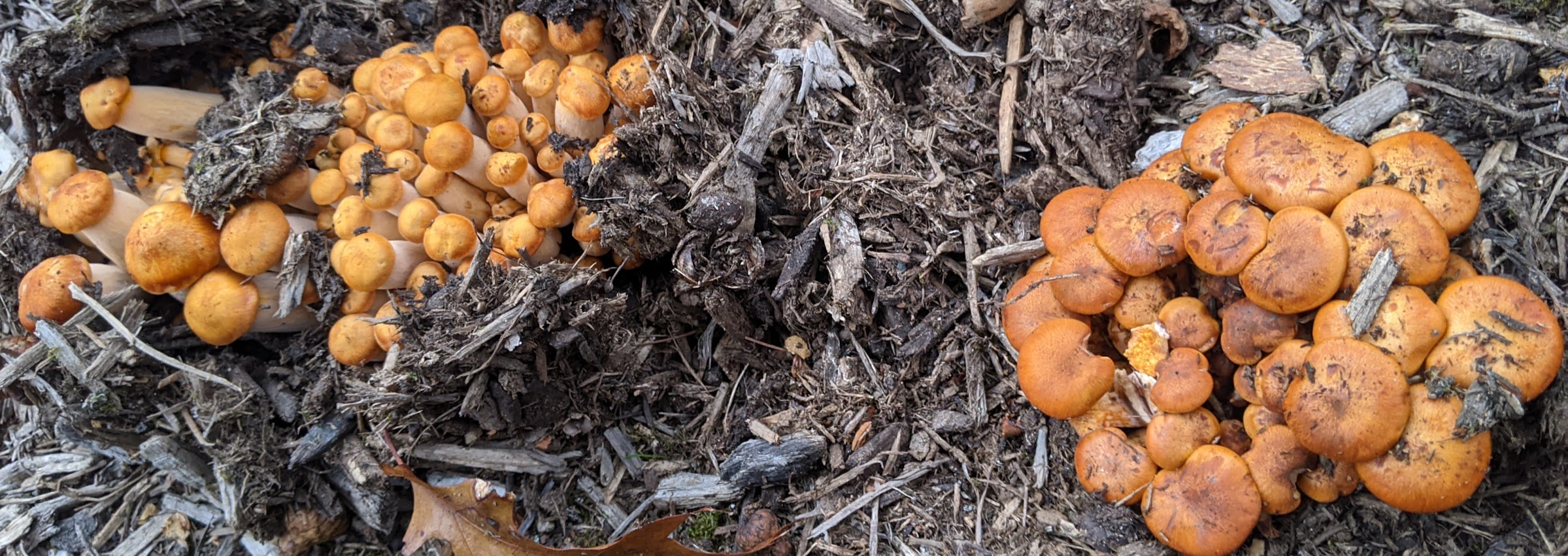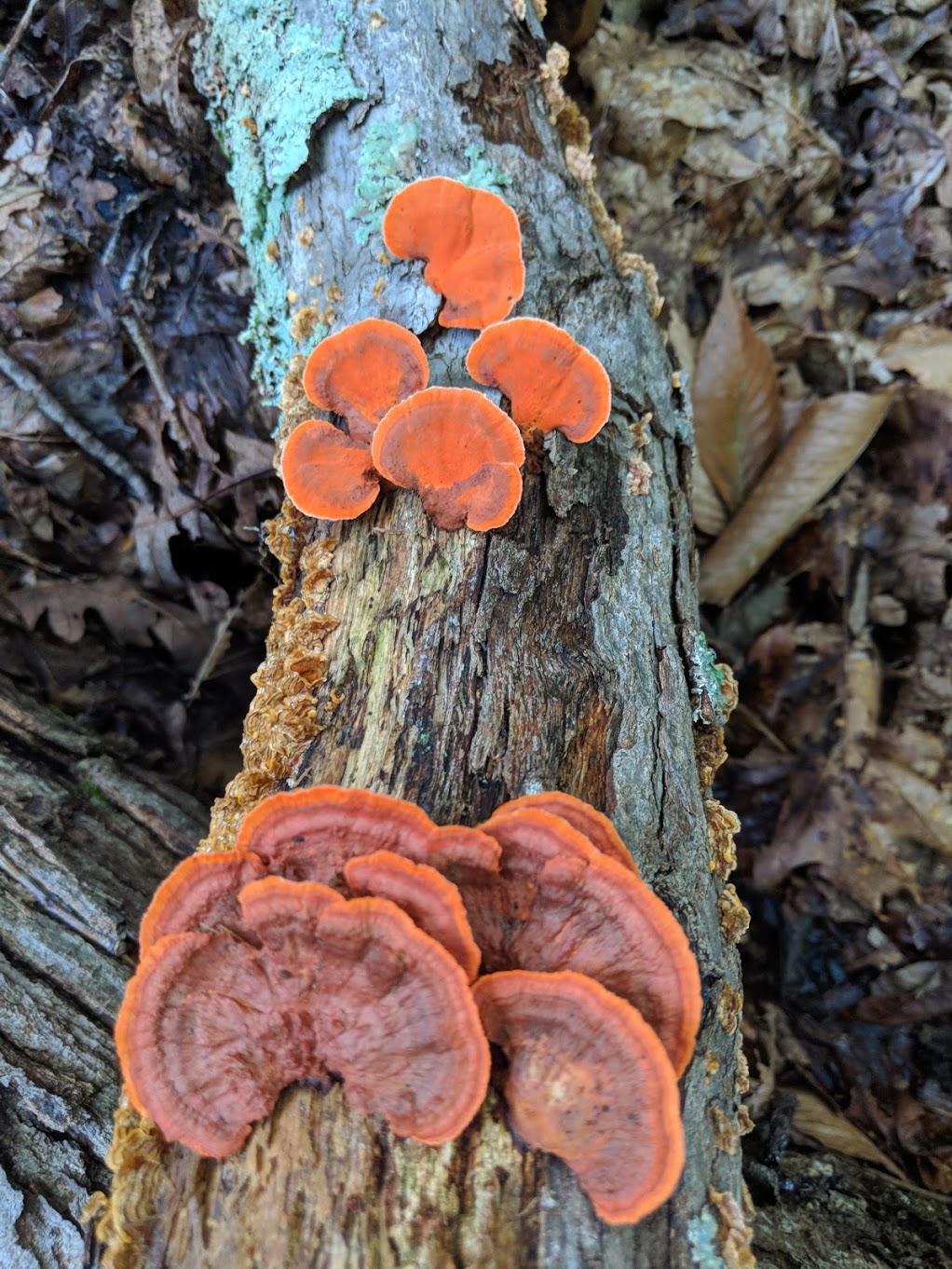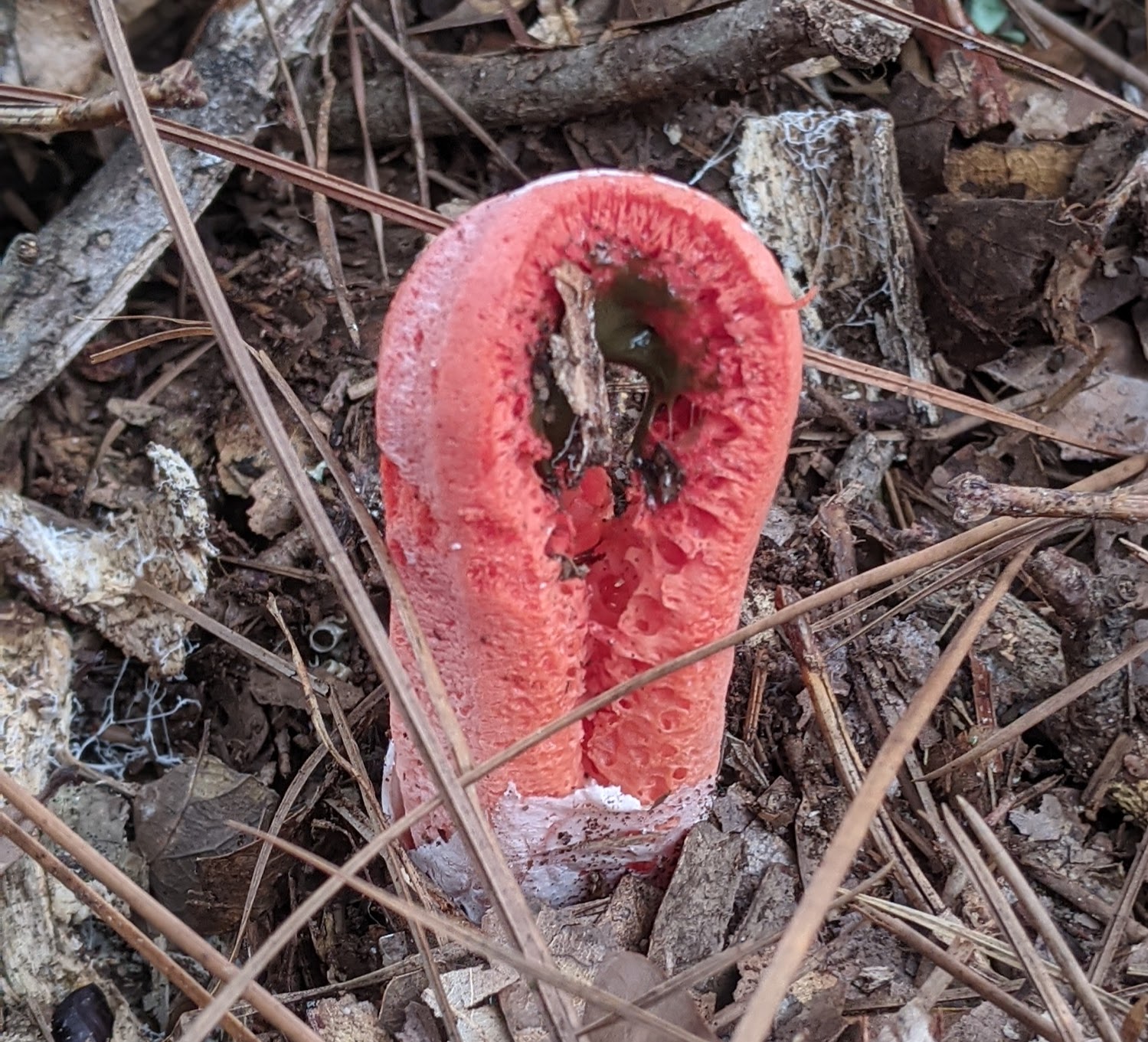The color orange and mushrooms.

I spent an hour looking through old mushroom pictures, attempting to come up with a slide or two to present at a friends birthday party. It turns out I've taken quite a few pictures, and documented a bunch of species. Which, of course, was very satisfying to realize.
I was surprised by how many colorful mushrooms I'd found. Before I started looking for mushrooms regularly I think that i imagined them as mostly brown, tan, or white; camouflaged or hiding. And I was also surprised by the sheer number of orangish mushrooms; pale orange (and delicious) chicken of the woods, bright pumpkin jack-o-lantern mushrooms, yellow bolletes, glowing translucent witches butter, and delicate cinnabar-red chanterelles.

Frequently the chemical culprit appears to be "Canthaxanthin", a somewhat widely used food dye caratenoid. But the orange color doesn't appear to indicate anything about the food suitability of the mushrooms; encompassing some of the most famously poisonous mushrooms (like fly agaric) and some of the choicest edibles (chicken of the woods, chanterelles). Maybe it has to do with the weird dual nature of mushrooms, flowers built up on top of decay rather than production--with the same organism sometimes reproducing sexually (like the dead man's fingers below, attracting flies) and sometimes asexually. The orange color has this same dialectic quality; it is a sign of danger, but also attraction, Camouflage to deer; advertisement to flies.

I think it's interesting that learning more about something makes its meaning more ambiguous. The particular evolutionary contingencies that lead to a wide variety of orange mushrooms doesn't have any particular meaning. The unity of our perception--a range of seemingly related colors--doesn't map onto anything resembling a unified range of meanings. The trick to knowing, at least sometimes, is ignoring these superficial similarities and instead looking closely at each form in its particular context.
- Next: Recent notes
- Previous: Advent of Code 1
